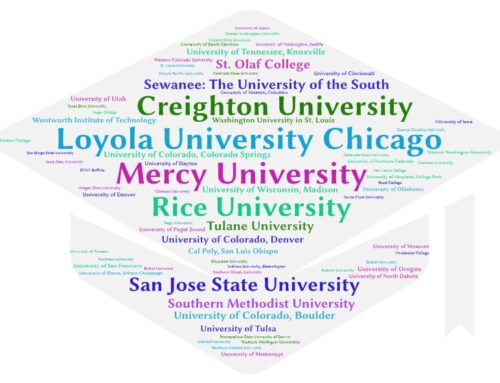When President Biden announced in August that he would forgive student loan debt for millions of borrowers, many critics argued that his plan did not address the larger problem of the rising cost of college. In response, I published a blog post entitled, “Why Is College So Expensive?” A couple weeks later, the podcast The Daily devoted an episode to this same topic, during which the host interviewed Ron Lieber, a personal finance columnist for The New York Times and author of the book, The Price You Pay for College.
Lieber offered three main reasons why college has become so expensive, and these reasons mirrored those in my blog post: 1. increasing administrative costs; 2. building and maintaining buildings; 3. less state funding for public colleges.
Lieber then made an important point: while colleges’ list price has increased dramatically over the last couple decades, most families do not pay full price, and the net price (what students actually pay, on average), has not changed significantly. In fact, he said, “at public colleges, the net price hasn’t gone up anywhere near as quickly as the list price. With private colleges, it has barely budged over the last 15 years.”
Lieber explained that there are three types of colleges — highly selective (or highly rejective) colleges, moderately selective colleges, and public colleges — and that each type has approached pricing differently. As an example of a highly selective school, Lieber talked about Yale. He said Yale accepts about 4% of applicants, so it can charge a really high price and many people are willing to pay it. However, just under 50% of Yale’s students actually pay the list price; the rest receive need-based financial aid. Colleges like Yale are able to award so much financial aid to so many people because they have huge endowments.
Lieber said colleges in the second category, which I am calling moderately selective colleges, account for far more colleges and educate far more students than the highly selective schools. He used Connecticut College (CC) as an example. It has an acceptance rate of about 38% but its list price is almost as high as Yale’s. Several years ago, an increasing number of students either were not applying to CC or were being admitted there but going elsewhere, and one of the main reasons was CC’s price. In response, Connecticut College began offering merit aid, and in the 1980s and 1990s, many other colleges also adopted this practice. According to Lieber, nearly all colleges now award merit scholarships as an incentive to attract students whose families can afford the list price but may not think that price is worth it.
Public colleges are the final type of college that Lieber identified. Sticking with Connecticut, he gave the example of the University of Connecticut, a.k.a UConn. He said UConn’s list price for in-state students is about $33,000/year. Although that is considerably less than the price at numerous colleges in the two other categories, it is still more than many people can afford. And even after public colleges award financial aid, there is often a gap between what families can afford and what they’re expected to pay, so students take out loans to make up the difference.
The Daily‘s host then asked Lieber why colleges don’t just lower their list price rather than offering so much financial aid. Lieber gave two reasons for this: 1. some families are willing to pay the list price (and he suggested more are willing to do so at highly selective schools vs. moderately selective ones); 2. people associate price with quality, and colleges don’t want to be seen as not providing a quality education/experience. Lieber explained that Rice University, which is highly selective, has a large endowment and used to have a lower list price than many similar colleges. However, Rice’s administrators were concerned that people would think the university wasn’t as good as its competitors, so over time they raised the price. The result? Rice had more applicants, not fewer.
In conclusion, Lieber echoed what many of Biden’s critics have said: forgiving student loan debt does not change the fact that colleges are charging outrageous list prices, and although they are offering more financial aid, many students still have to borrow money to attend. Additionally, while higher-income families are successfully navigating the confusing college pricing process (by negotiating for more merit aid, for example), the high list prices and the complexity of the process is discouraging many middle- and low-income students from even applying to college. Worse yet, such students may borrow money for a low-quality education or they may drop out and then have debt but no degree.
Unfortunately, Lieber did not propose any solutions to the aforementioned problems, and thus far, the government hasn’t either.






